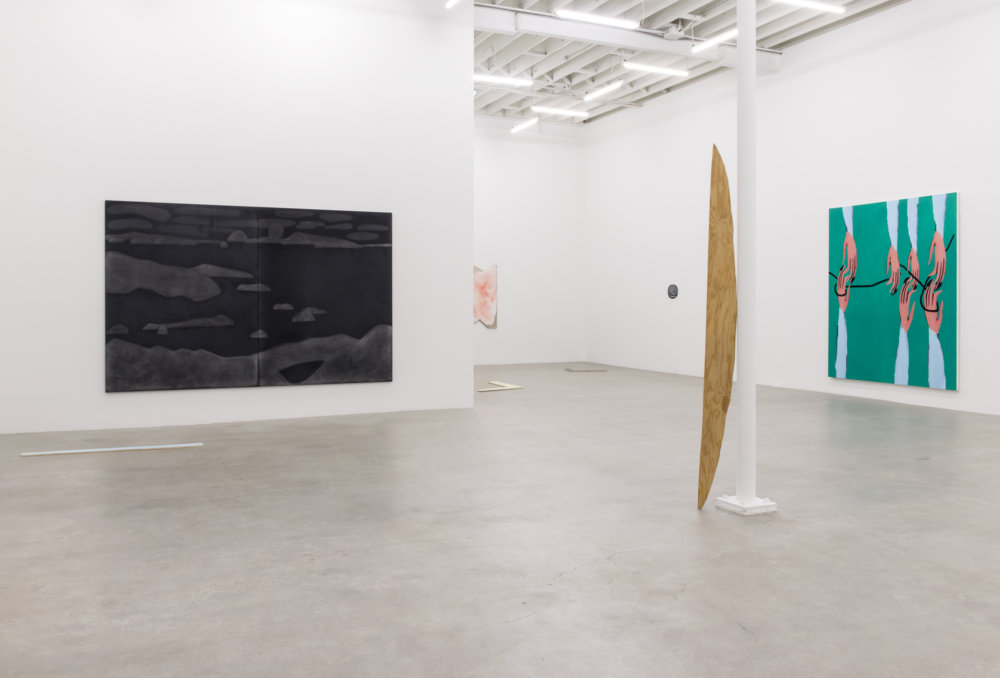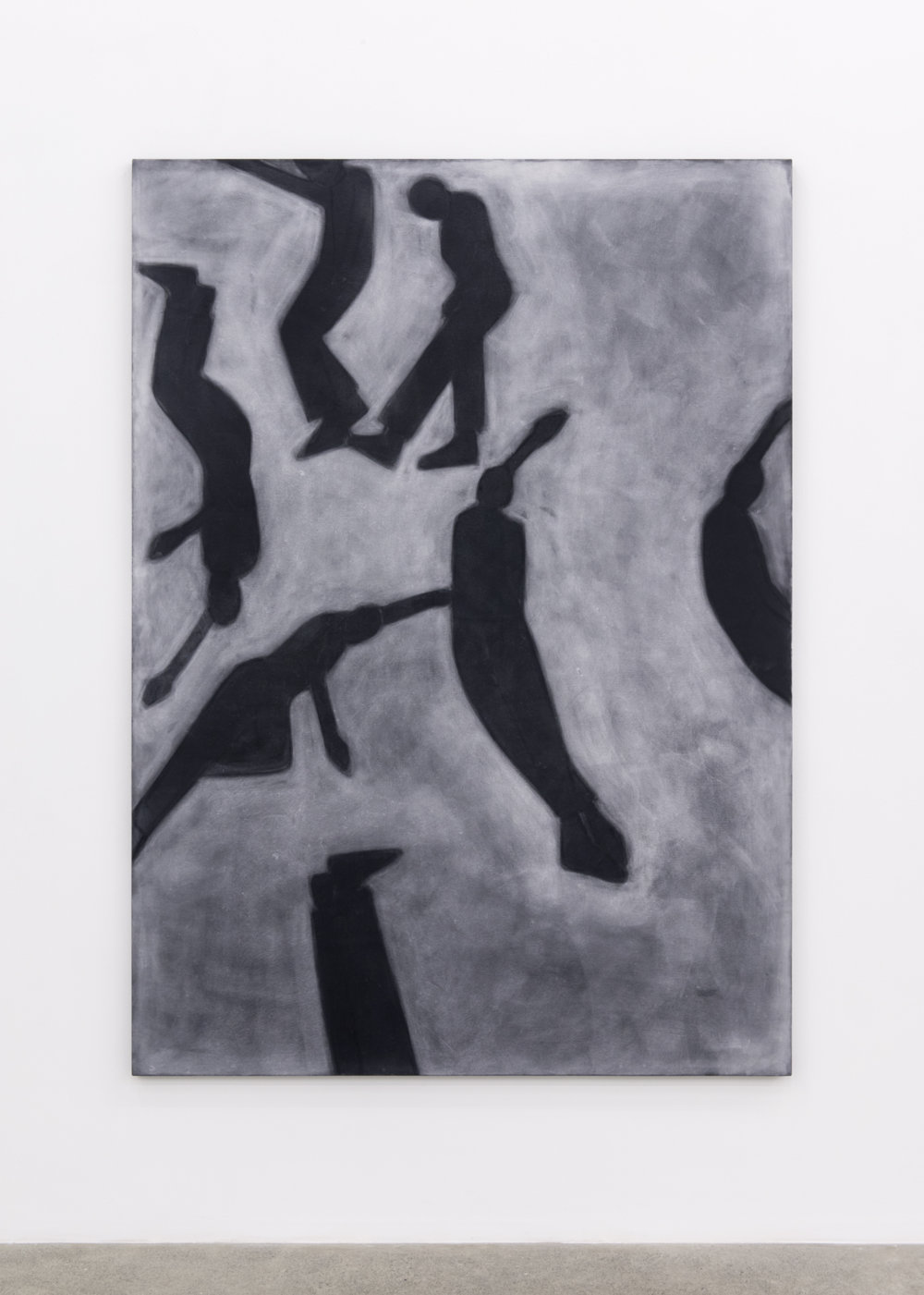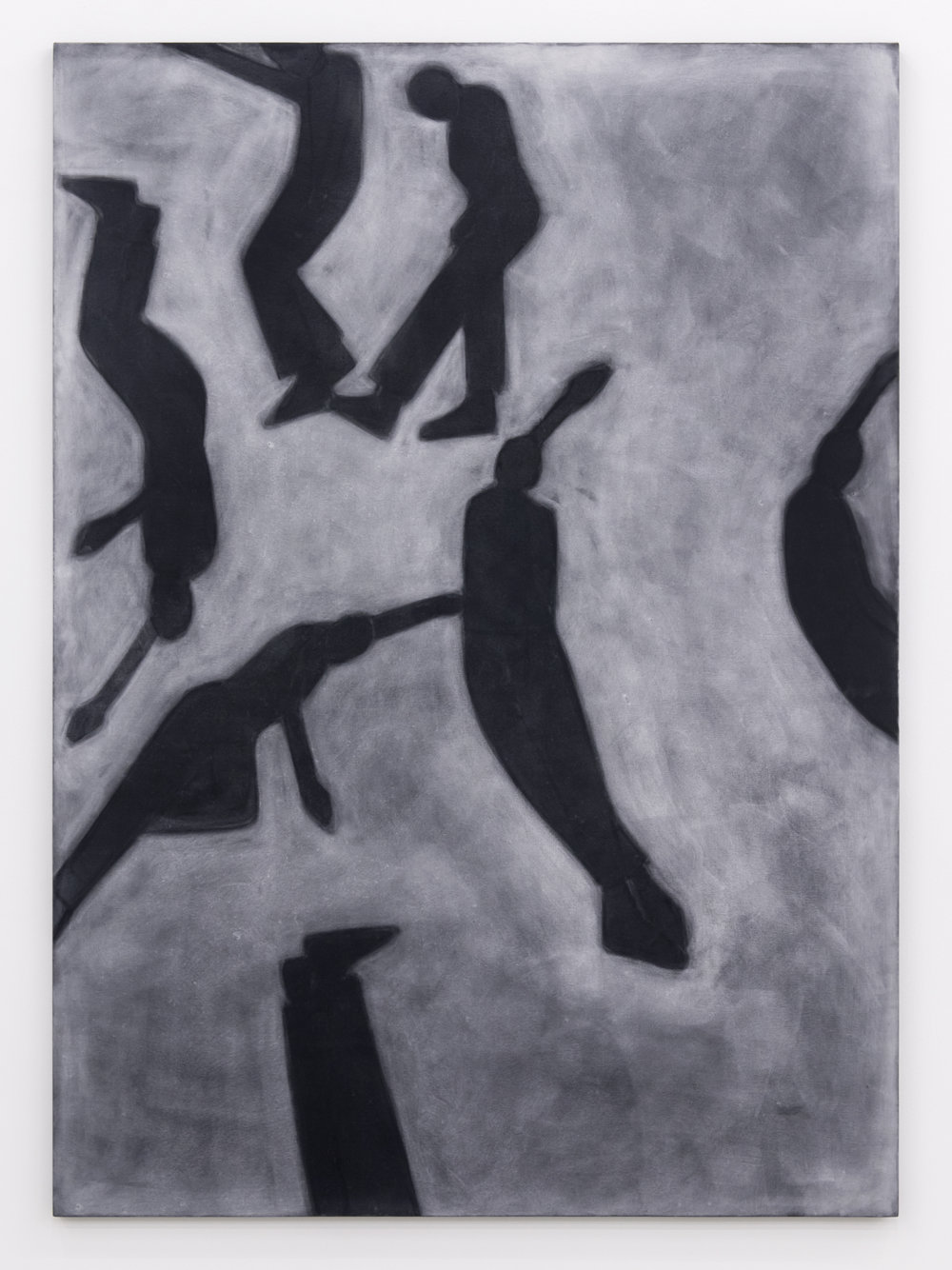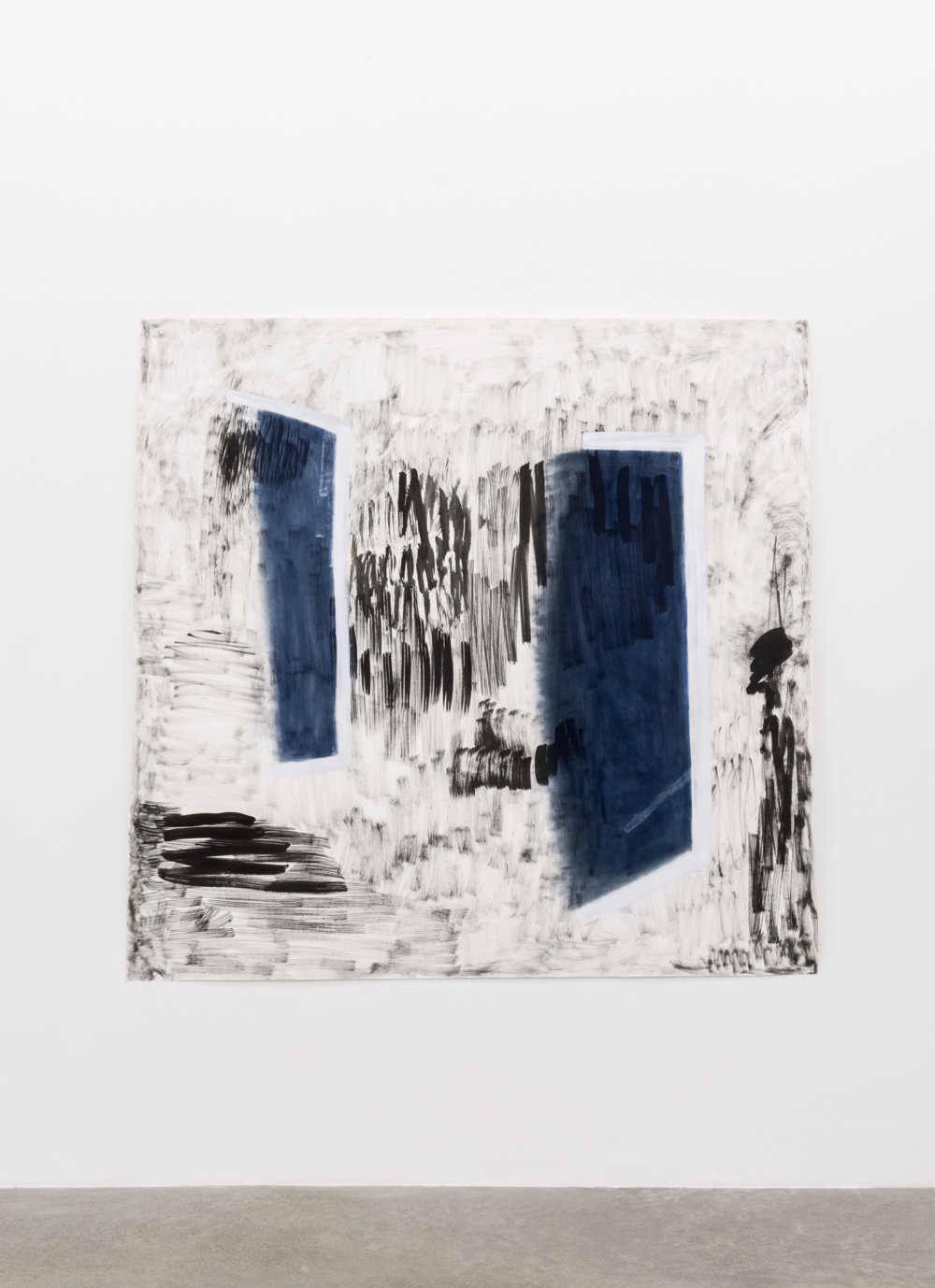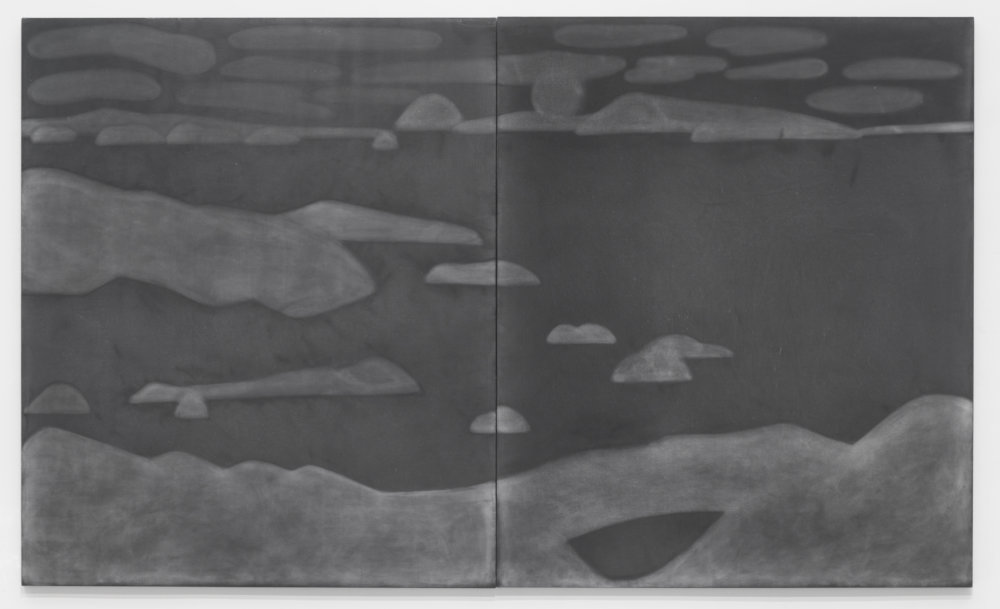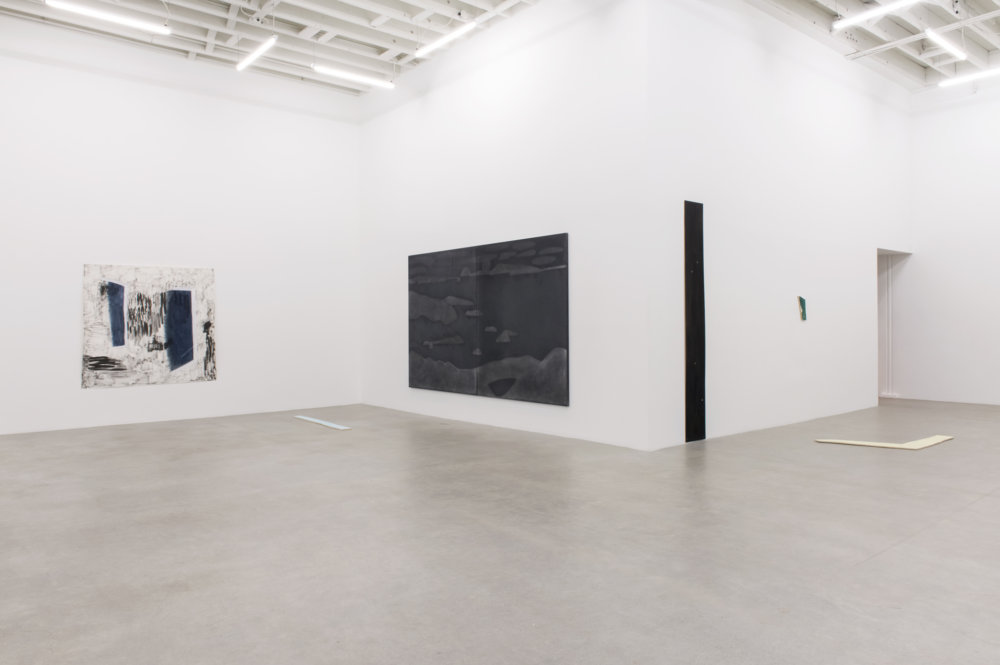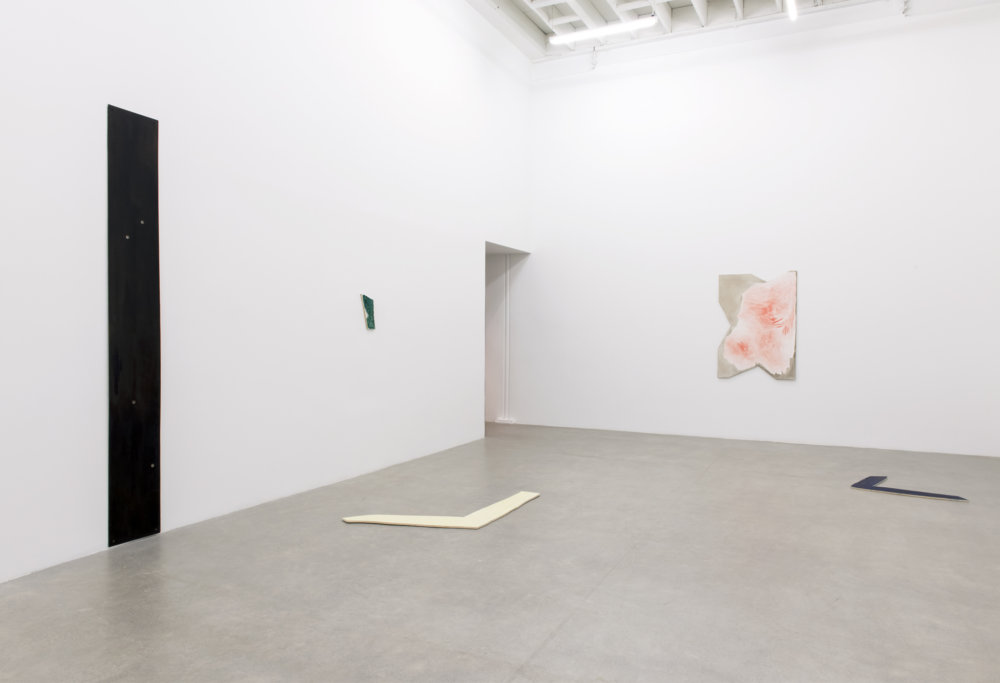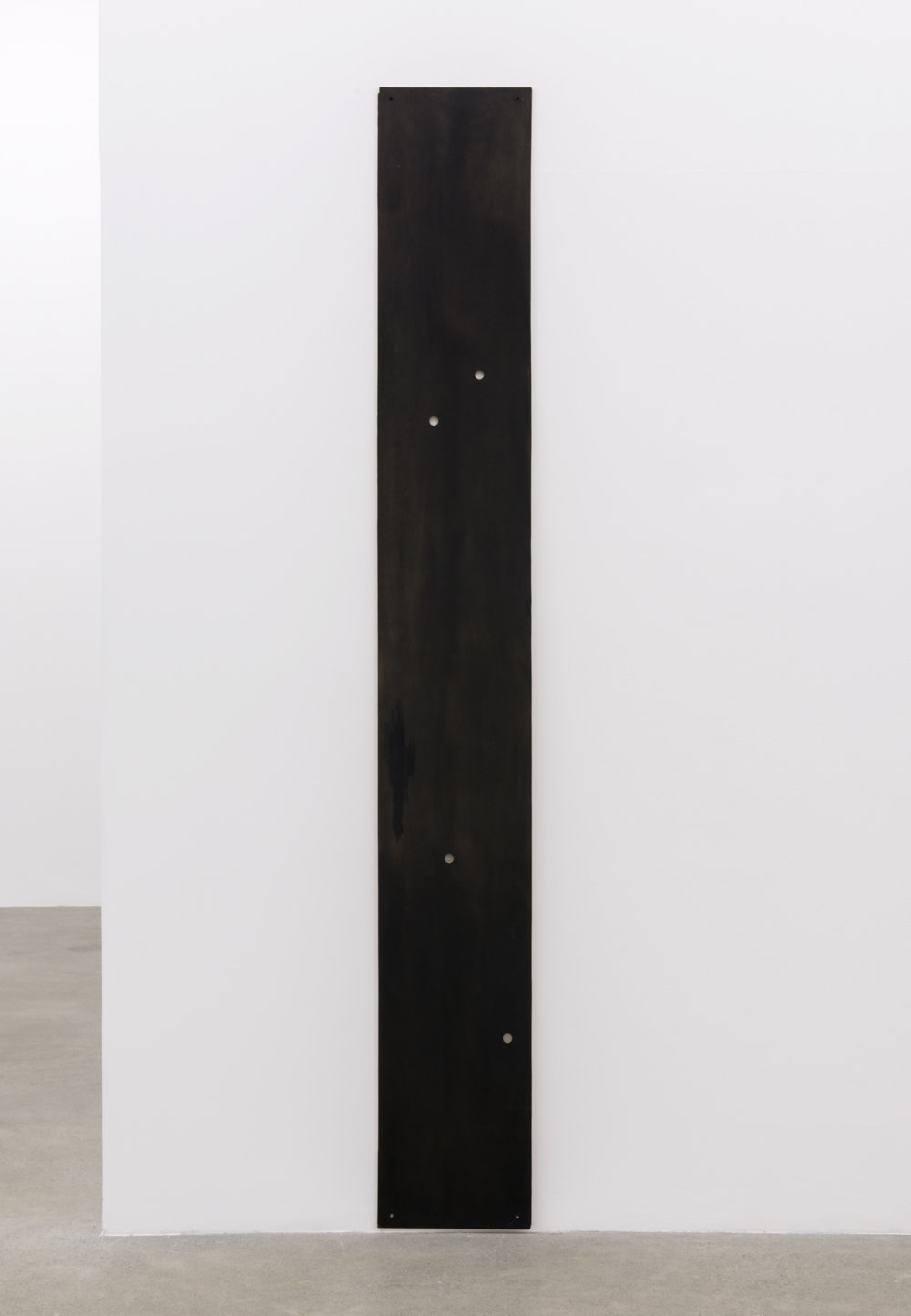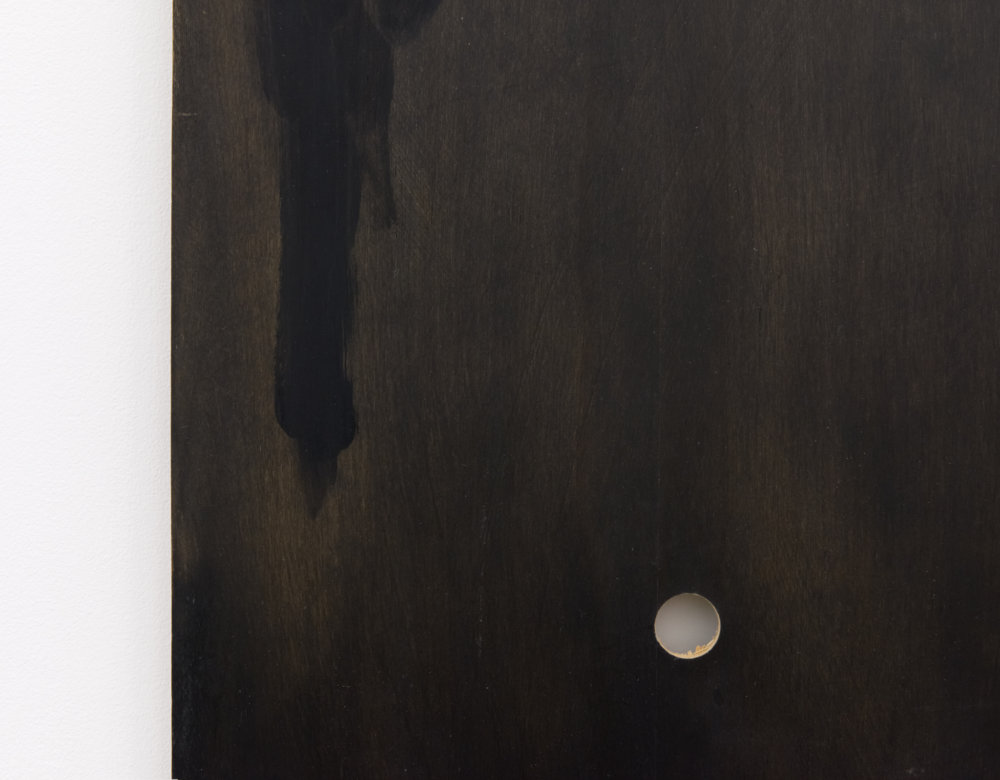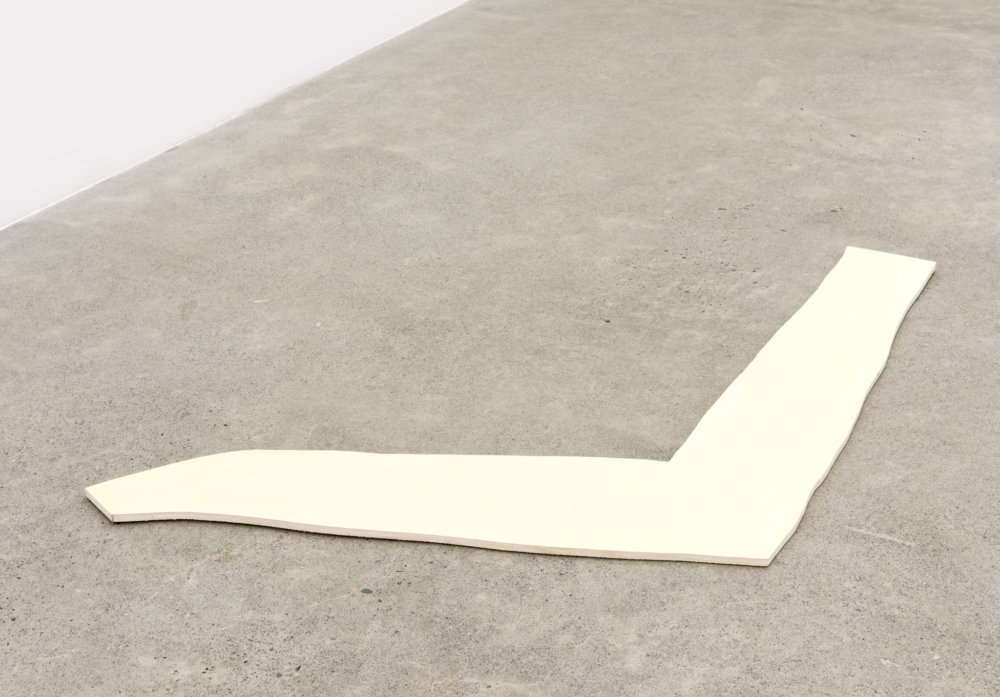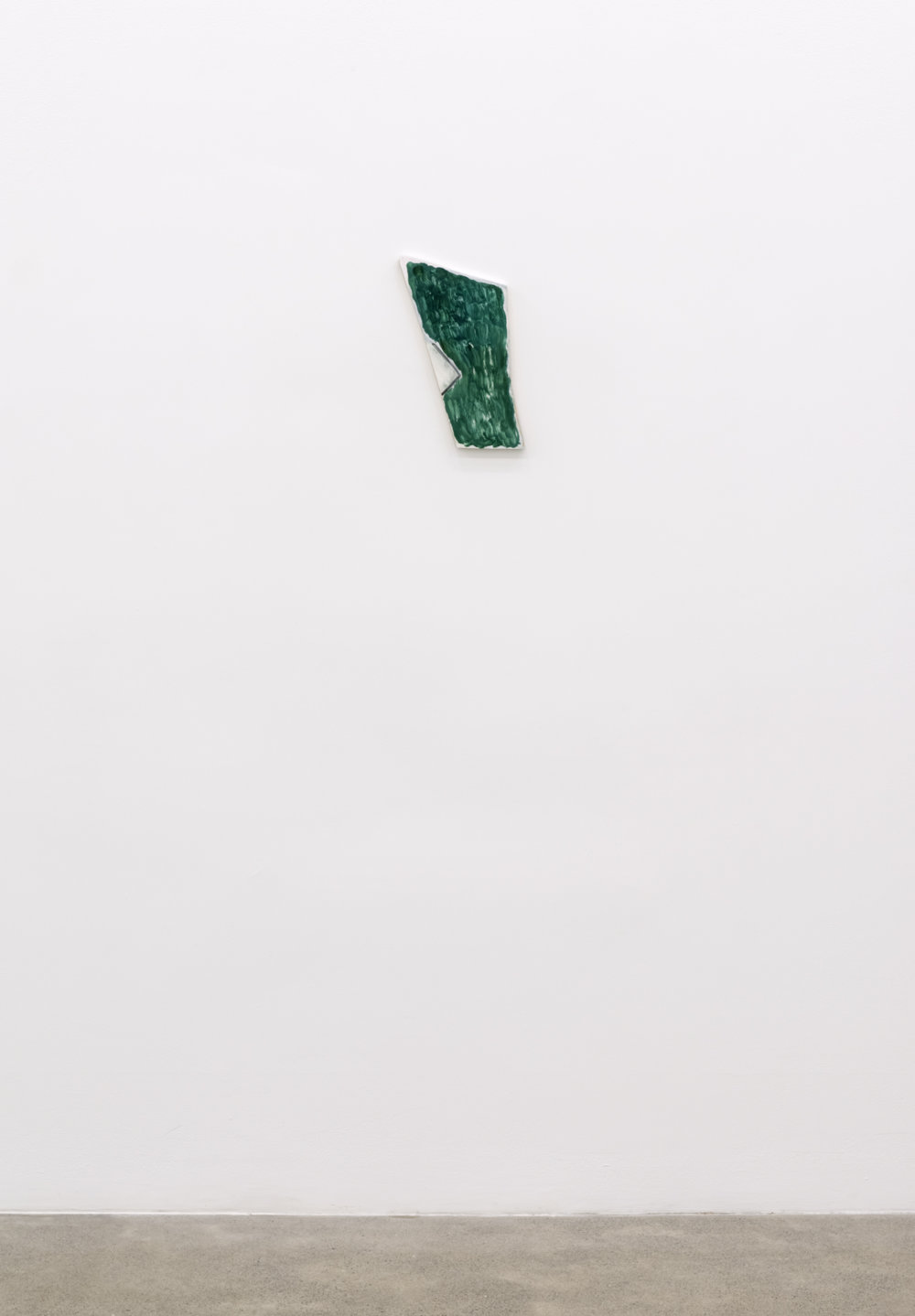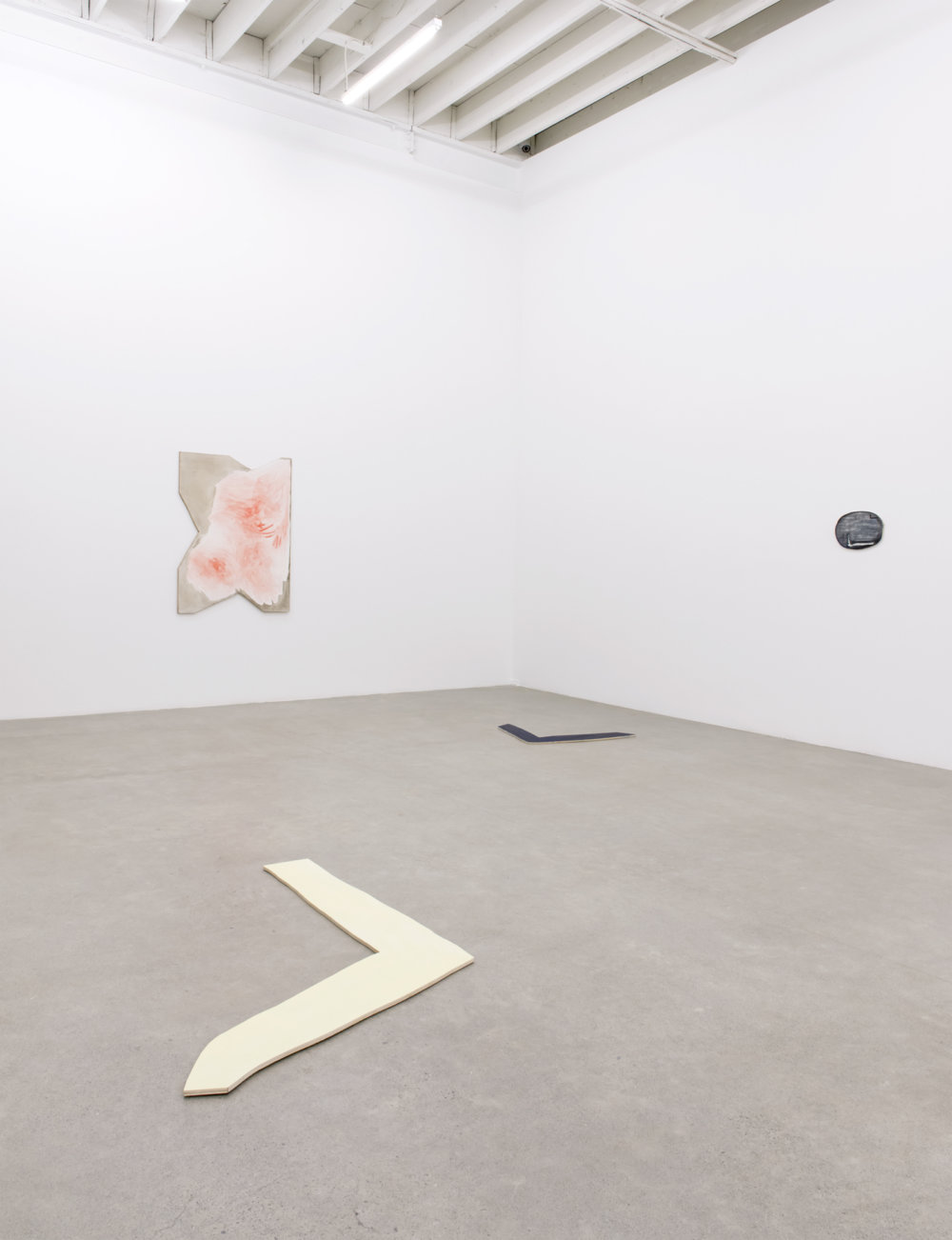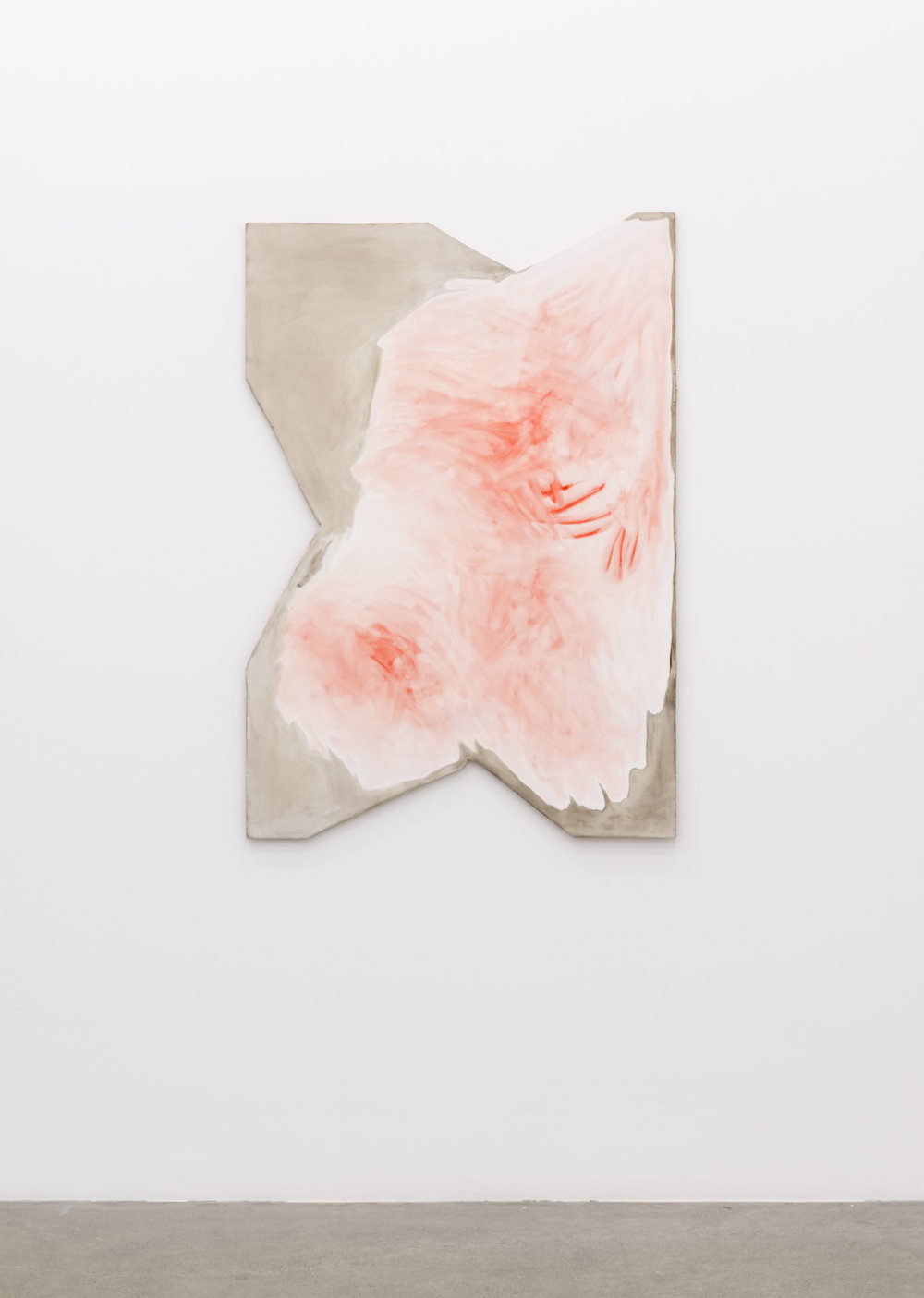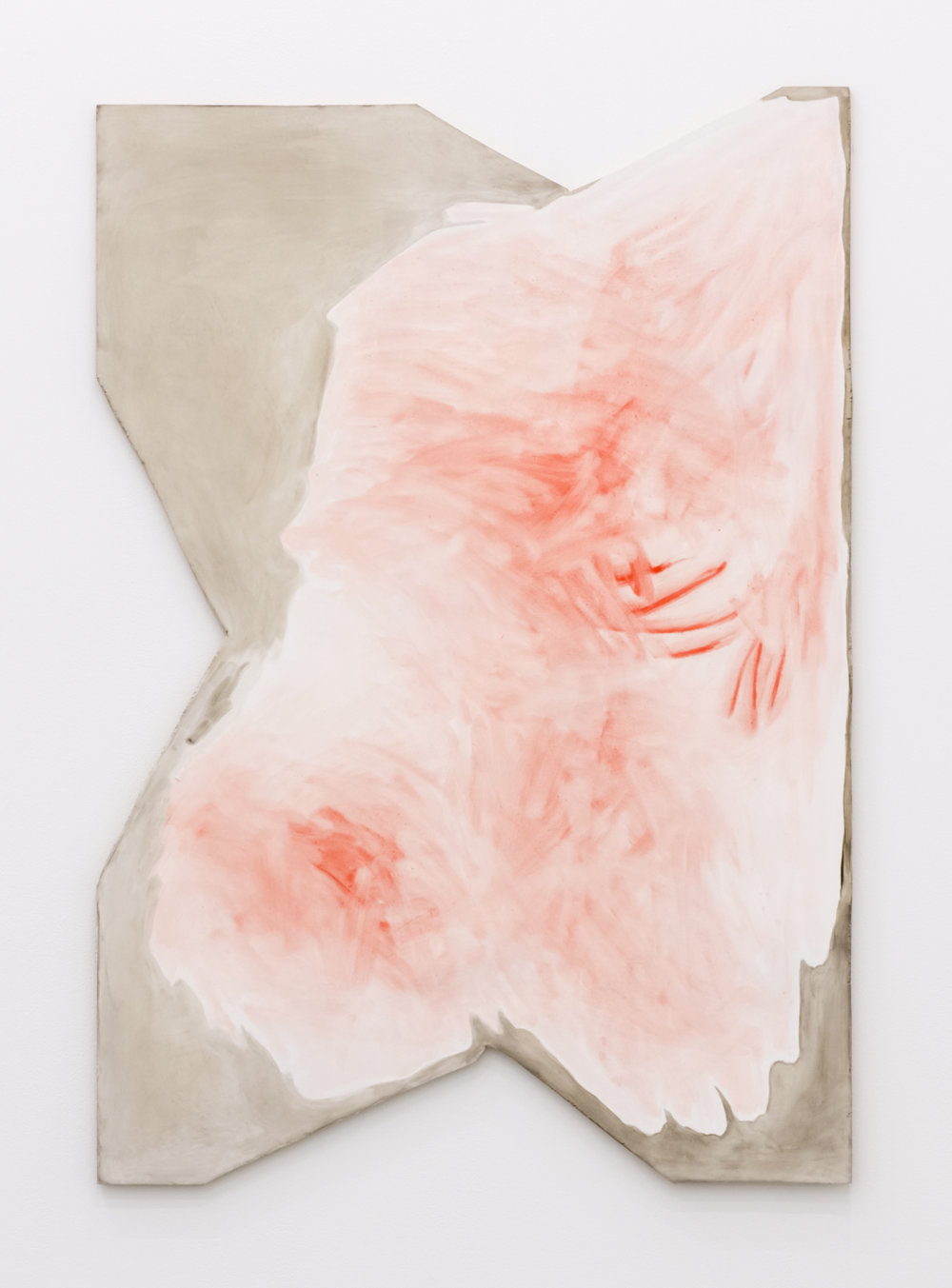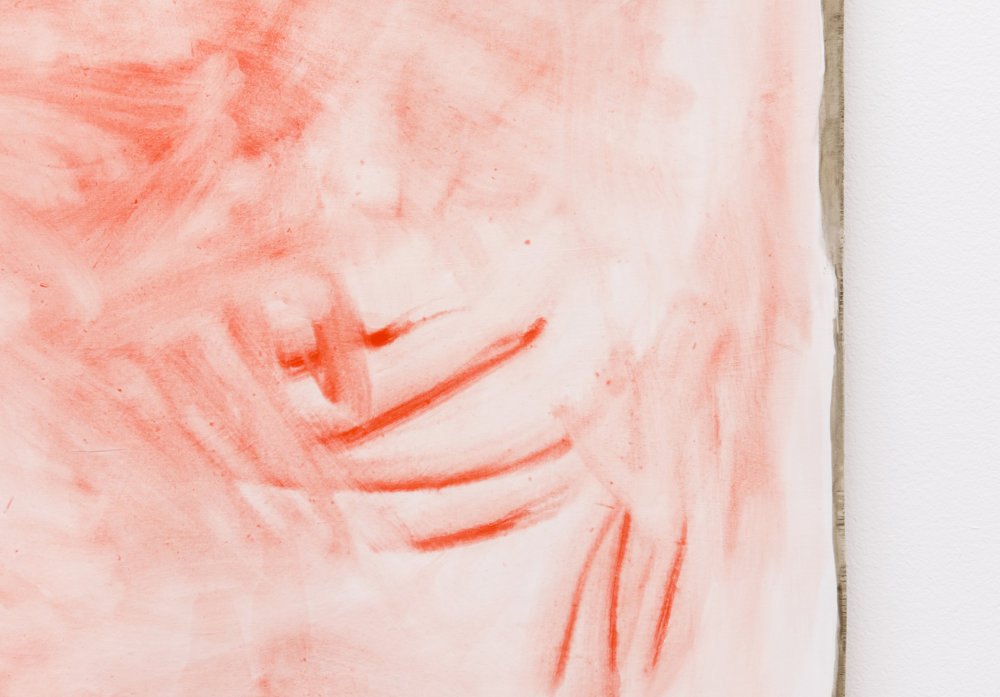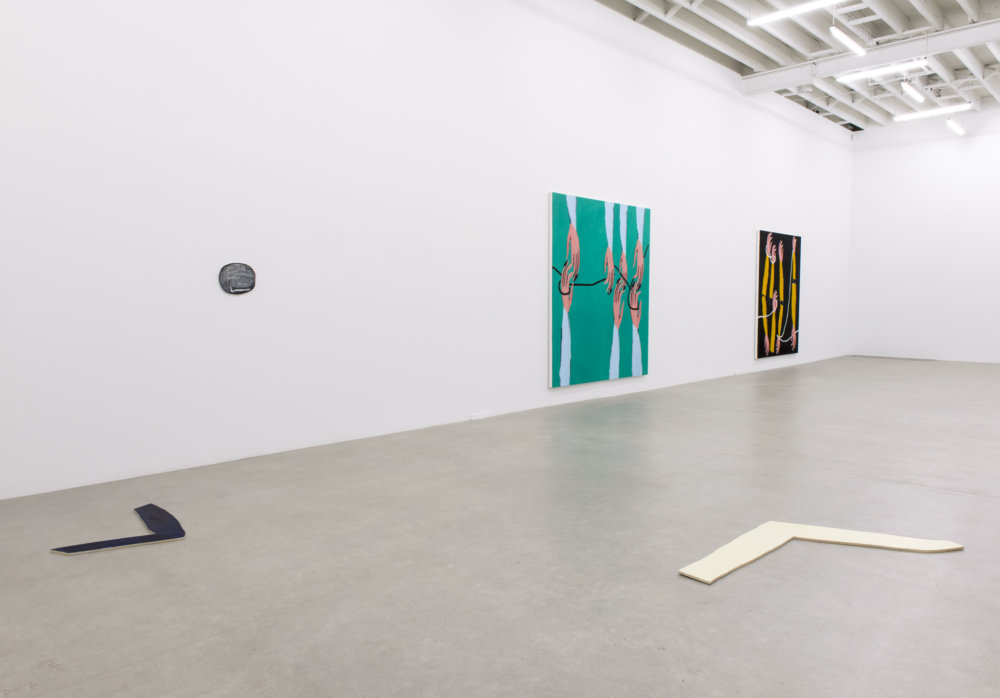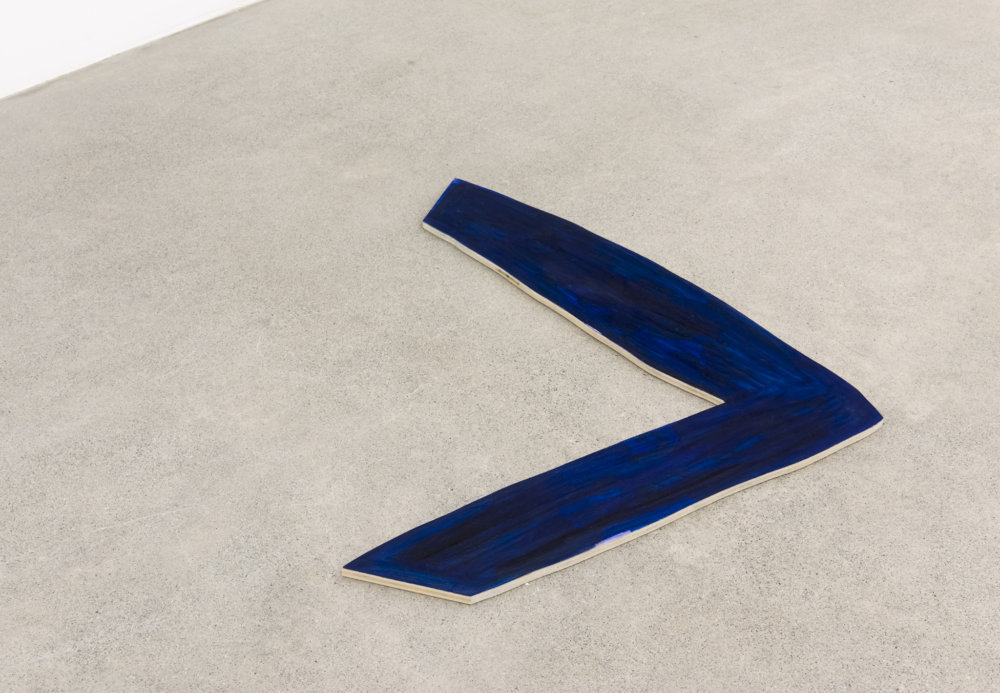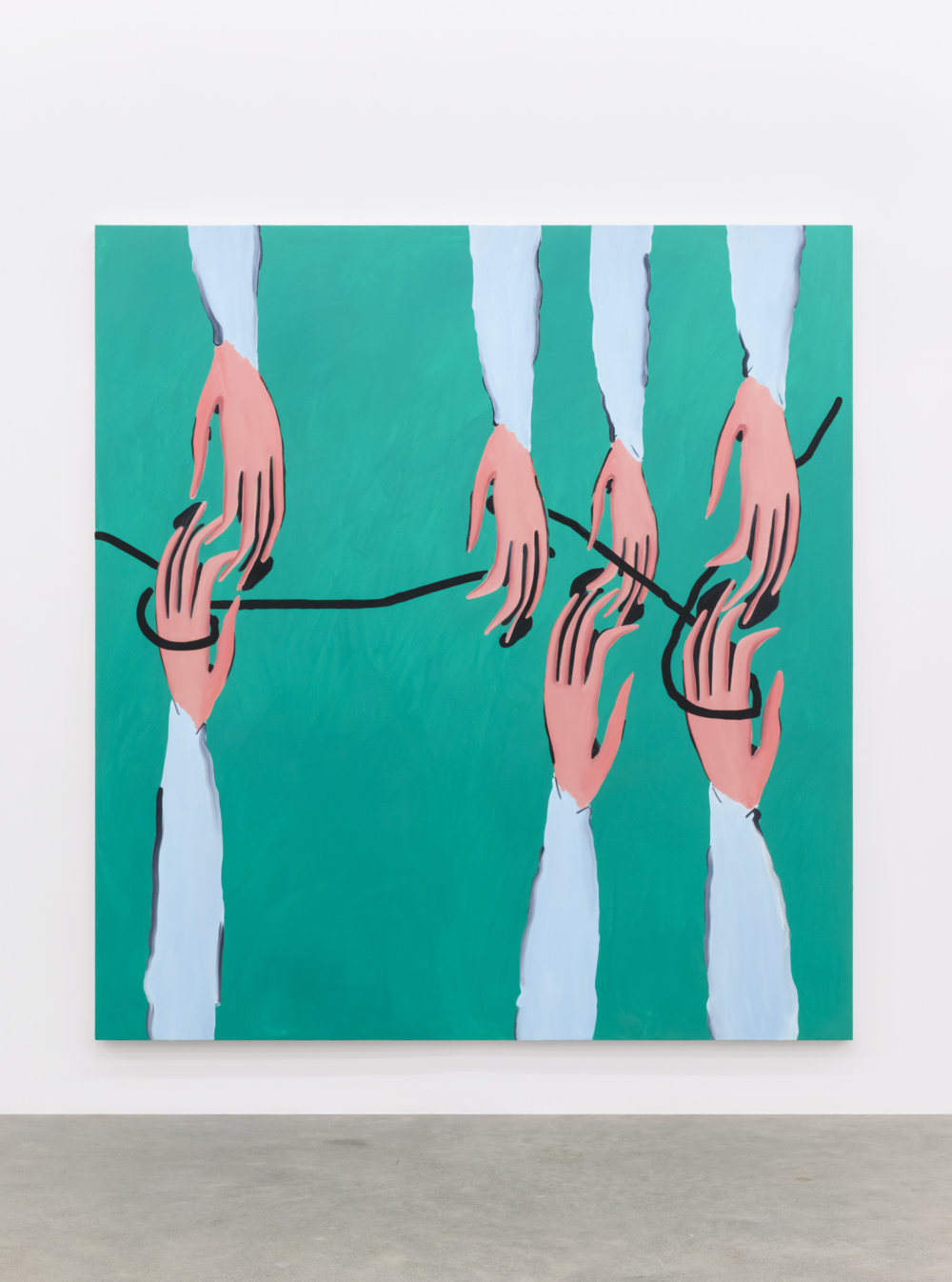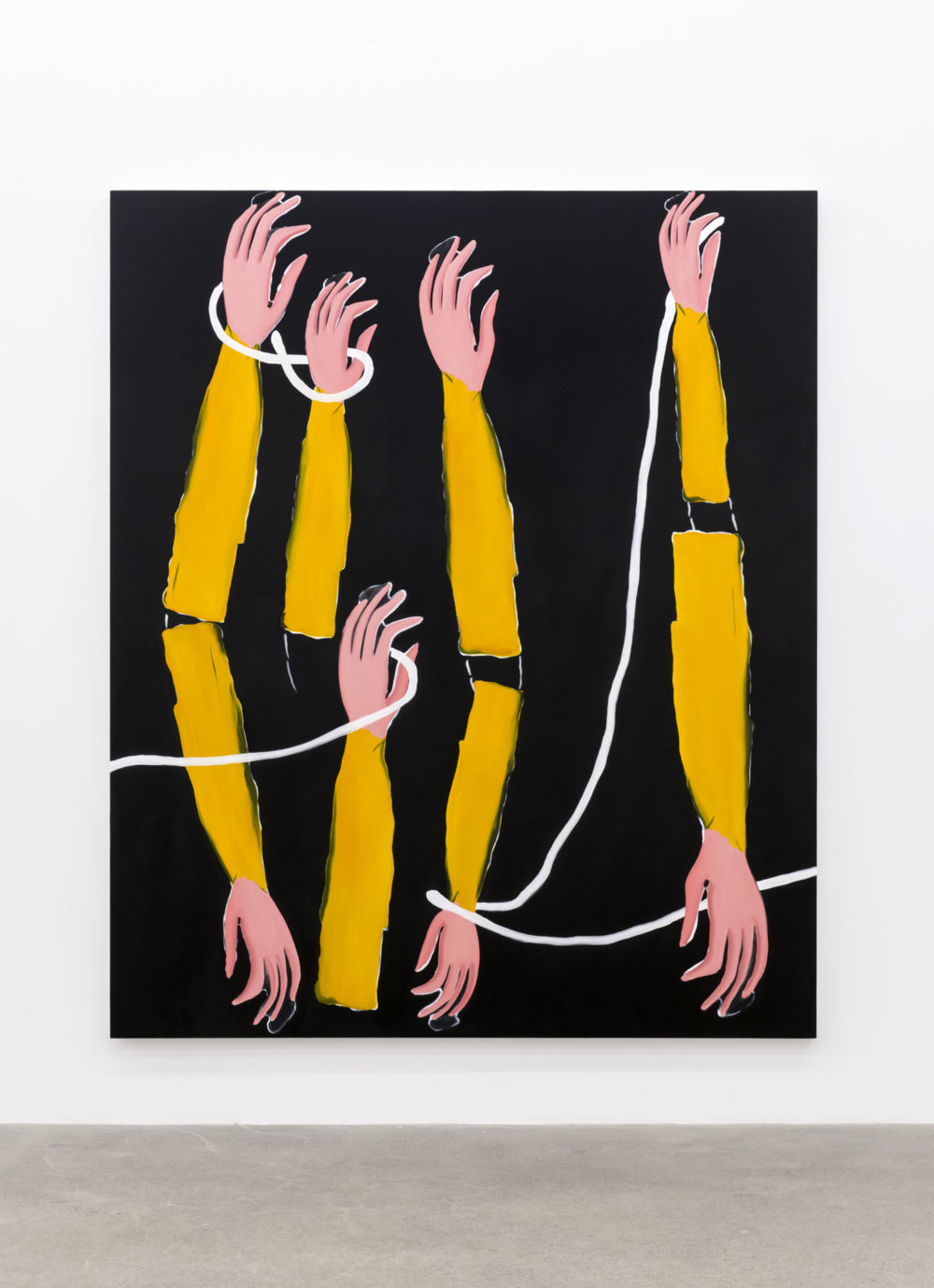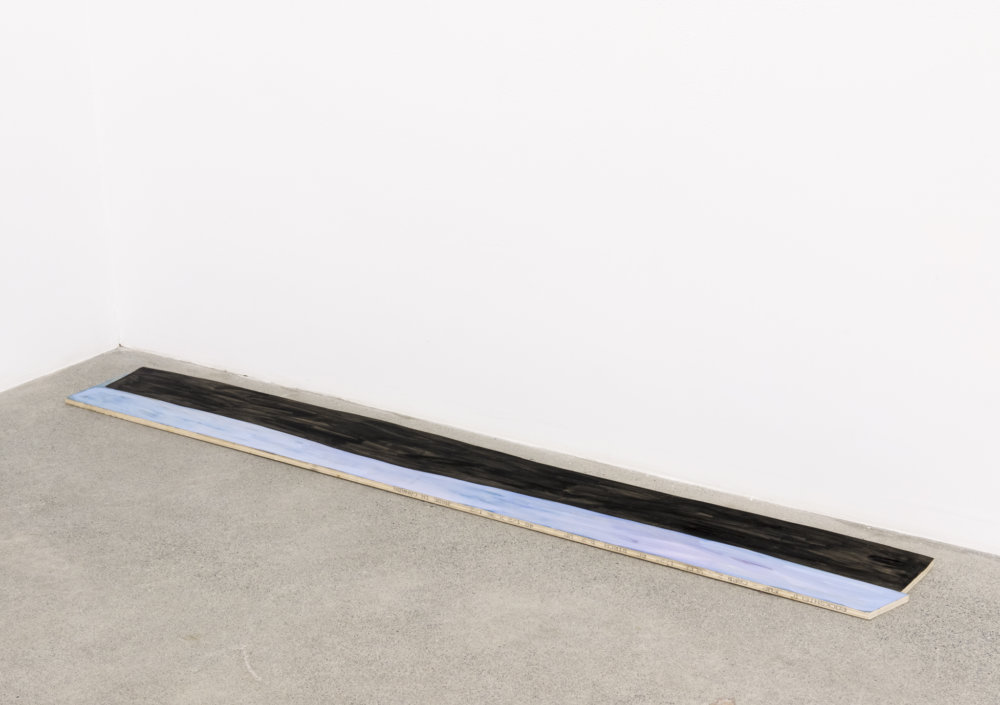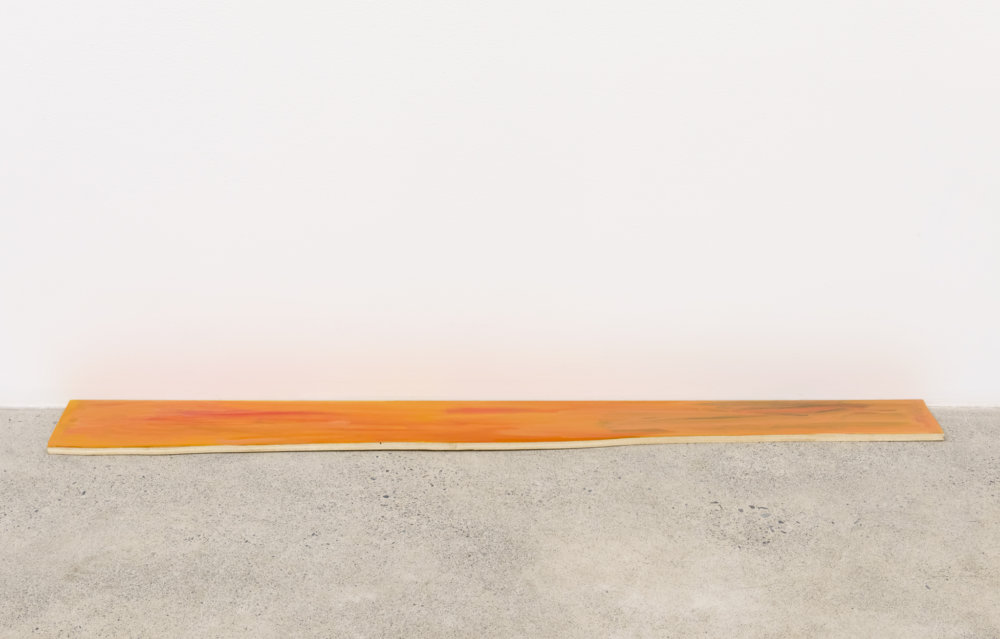Elizabeth McIntosh, Monique Mouton, Silke Otto-Knapp
May 26–July 8, 2017
Painting is not a problem. It has been with us, carried along with church and state, private and public capital, and the development of industrial processes. It has been readymade for some time. Suspended pigments are fabricated and squeezed into tubular packaging, woven canvas pulled from looms of mass production, thin wood sheet layered, glued and heated together to form a rigid substrate for building. Painting has production value and the materials are familiar.
We remember that this exhibition really began with discussions around the first Hands Arms painting of Elizabeth’s, which she painted during the latter weeks of the 2016 US election. There was a process of interpreting the painting, making symbolic references, understanding the arms and the rope, the colour decisions and how the black leaked through. How the arms appeared to be male? How the rope/switch/branch/bar of the connecting black painted lines were also just painted lines. Reflexive play from symbology back to the painting itself. Then there was the consideration of the ground, how the objects are suspended in front of an illuminated, glowing backdrop.
Which then took us to the consideration of forms in front of a backdrop. We started to think of a body politic and Silke’s figure paintings, and her new work with predominantly androgynous figures, drawn from the documentation of a Vietnam Era antiwar dance. Originally an aerial view of figures resting, in this new painting they could be tumbling. We then shifted to the backdrop of the Fogo Islands in Silke’s diptych, where forms suspended in space can be bodies or land masses. We are still considering the unstretched inky black canvas backdrop painting of Elizabeth’s from 2013.
Then came Monique, how her paintings can be on the backdrop of a wall and then fall off to the floor, so to speak. How could their shifting scales and forms inhabit a space, implicating your body out of the corner of an eye? Our thinking was to move into further layers of abstraction, the symbol broken down, breaking the space of the frame and stretcher. We note a material difference of working with wood, cutting it, seeing those cuts, some intentional, some saw-determined. Her fragments are articulate objects, painterly and vulnerable.
Against a present-day global backdrop, painting has its problems. They are formal, social, historical, contemporary, and familiar problems, and they are ours to negotiate and ours to contend with.
Documentation by SITE Photography.
